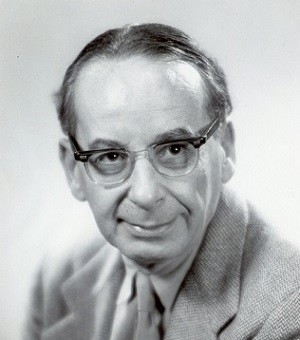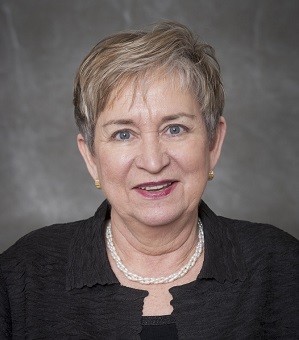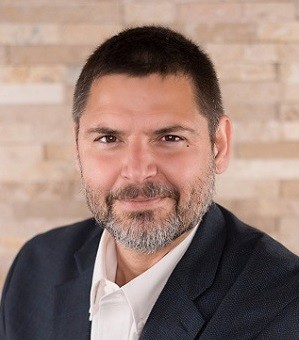The underlying intellectual structure of the Archives reflects the vision of its founder, George Herzog (1901-1983), Hungarian-born anthropologist, linguist, and ethnomusicologist. Herzog was educated in Budapest and Berlin, where he served as an assistant to Erich M. von Hornbostel at the Berlin Phonogramm-Archiv during the early 1920s. He studied at Columbia University under Franz Boas, and conducted fieldwork with Native Americans in the southwestern United States for the American Museum of Natural History, and in Liberia for the University of Chicago. Herzog's synthesis of the Berlin School of comparative musicology (with its focus on detailed and systematic analysis of music sound), and American ethnology (characterized by careful attention to field observation and historical processes), became the foundation for the emerging discipline of ethnomusicology.
Herzog regarded archiving as an essential ingredient for the development of an American school of comparative musicology. During the 1930s he undertook a survey of collections of recordings of folk and primitive music for the American Council of Learned Societies. With support from Franz Boas, Herzog began to assemble the Archives of Folk and Primitive Music at Columbia University, including his own field recordings as well as those collected by colleagues. He joined the faculty of Indiana University as a professor of anthropology in 1948. He brought with him a collection of nearly 10,000 recordings from his own research as well as from scholars and curators who had made ethnographic recordings in the late 19th and early 20th century.
George List (1911-2008) came to IU to study conducting and composition in the School of Music and already had a career as a conductor, composer, and music educator before he arrived. He was in his mid-40s when he took some of Herzog's classes in comparative musicology. Recognizing his organizational abilities, Herzog hired List to assist him in organizing the collection to make it accessible to researchers. List became a leader in the newly emerging field of ethnomusicology and in 1964 became a member of the recently established Folklore Institute. As an ethnomusicologist he did field research with Costeños of the Caribbean coast of Colombia, with Hopi in northern Arizona, and with Amerindians in the Amazon of Ecuador. Becoming the first full-fledged Director of the Archives in 1953, List supervised a much-needed move to permanent facilities in Maxwell Hall, and formulated policies and procedures for the processing and use of the collections. Because no similar archive existed at an American university, List visited the Vienna Phonogrammarchiv for ideas and best practices. The accession numbering system and shelf numbering system put into place by List is still used today. Originally established as the Archives of Folk and Primitive Music, in 1965, under List's direction, the name was changed to the Archives of Traditional Music. List distinguished himself in the field of ethnomusicology with a series of articles that worked to define the scope of the field and the nature of ethnomusicological research. He was active in the Society for Ethnomusicology and served as its secretary for a term. His writing on transcription was influential and he taught a required course in transcription and analysis to ethnomusicology students until his retirement in 1977 when blindness from glaucoma made it difficult to continue his work. After retirement, he continued to lecture and write, maintaining an active scholarly life and he maintained an office at the Archives which he visited regularly until his death in 2008 at the age of 97.
Frank Gillis (1914-1999), joined the staff as associate director in 1964, bringing a background in musicology, library science, and jazz performance to the position, He was responsible for refining catalog procedures and expanding the collections and he served as director from 1977 to 1981. Gillis' interest in jazz led to the acquisition of significant holdings of early jazz and blues recordings. Under his direction, large numbers of commercial 78 recordings were purchased or donated to the Archives' holdings. Gillis was responsible for hosting the first meeting of the Association for Recorded Sound Collections (ARSC) on the IU campus in 1967.
Upon Frank Gillis' retirement in 1981, Ronald Smith, professor of folklore, served as acting director for a year. During his brief tenure, discussions to move the Archives out of the basement of Maxwell Hall to new facilities in Morrison Hall were initiated. The move was completed under the directorship of Anthony Seeger (1982-88). During this time, the Archives secured several grants for preservation and access activities, including online cataloging of all field recordings in the collection.
Anthony Seeger was hired as a professor of Anthropology in the position left vacant by the tragic and untimely death of Alan Merriam. Seeger's new appointment also included the directorship of the Archives of Traditional Music. Seeger worked to revise agreements with depositors, giving the Archives more control over long-term decision-making about access to collections. His most significant legacy was guiding the move of the Archives into a facility in Morrison Hall. For the first time, the Archives were housed in a space that was designed as an archive. With the assistance of Chancellor Herman B Wells, Seeger worked with the Hoagy Carmichael family to establish a special room as part of the archives that would showcase the legacy of Hoagy Carmichael. In addition to the Hoagy Carmichael collection coming to the Archives of Traditional Music, the Hoagy Carmichael room was constructed as part of the Archives and has served as a place for lectures, performances, receptions, symposia, and other special events. It was during Seegers' tenure as director that the Archives followed the Federal Cylinder Project of 1979 and was awarded an NEH grant to make preservation tape copies of the nearly 7,000 cylinder recordings in the ATM holdings and rehoused the cylinders for better long-term storage. In 1988, Seeger left Indiana University to become director of the new Smithsonian Folkways division where he successfully created a new recording production company out of the remnants of Moses Asch's Folkways Records. Since leaving Indiana University he continued his work with the Suya people of the Brazilian Amazon and has been active in indigenous peoples' rights issues. He also served as president of the Society for Ethnomusicology between 1991-1993.
Ruth M. Stone became director in 1988 and strengthened the Archives' legacy by sponsoring academic conferences and securing state-of-the-art compact shelving for collection storage. Stone was a graduate of the IU Folklore Institute and had worked as one of the many graduate students in the Archives from the growing ethnomusicology program. One of the most important efforts during her tenure was the development of the relationship with the Laura Boulton Foundation and the acquisition of the Laura Boulton Collection, consisting of thousands of recordings and an accompanying endowment. Stone is an important scholar of Liberian music and culture and she also oversaw the addition of several important collections of Liberian materials to the Archives. She left the position in 1995 to become Chair of the Folklore Institute. Like Frank Gillis and Anthony Seeger before her, she also served as president of the Society for Ethnomusicology (1995-1997). Ruth Stone returned to the Archives to serve as an interim director between 2000 to 2002 and continues to be a tireless supporter of the activities of the Archives.
Gloria J. Gibson came to the Archives from her work with the Black Film Archive and the department of Afro-American Studies. When she became Director in 1995, she worked to promote the Archives and developed several projects that curated ATM holdings to a larger public. With funding from a National Leadership Grant from the Institute of Museum and Library Services (IMLS) and Indiana University, the Archives worked with the Digital Library Program to digitize several hundred recordings and paper artifacts from the Hoagy Carmichael collection. Where copyright allowed, digitized versions are now available online. A second, even larger digital project was undertaken when the National Endowment for the Humanities funded the Strauss Expedition Project. Working closely with graduate student and Laura Boulton Junior Fellow, Daniel Reed, Gibson worked to present a small portion of the enormous Laura Boulton collection through the primary digital multimedium of the time–the CD-ROM. The CD-ROM created a rich multi-media exhibit and educational resource that used audio, film, notes, and images from the Boulton collection to describe a 1934 expedition through West Africa. This multi-year project was a collaboration with the Teaching and Learning Technologies Center and involved a team of designers, programmers, and graduate students. The completed CD-ROM, The Straus Expedition: Musical Instruments of West Africa was finally published by Indiana University Press in 2001. Gibson split her time between the Archives of Traditional Music and a position as Assistant Director of the Black Film Center Archive. In 2000 she left Indiana University to become Dean of the College of Humanities & Social Sciences at Arkansas State University and later Provost at Northern Iowa State University.
In 1971, near the end of George List's tenure as director of ATM, List hired Marilyn Graf to be his assistant at the Archives. Displaying excellent organizational skills and an eye for detail, within a few years she became the archivist for the ATM. In the fall of 2011, she celebrated 40 years with Indiana University and the Archives of Traditional Music. During that time she has served thousands of patrons and developed a deep knowledge of the holdings at ATM. She has worked for all of ATM's Directors, with the exception of the Archives' primogenitor, George Herzog. She was part of the move from Maxwell Hall to Morrison Hall in the mid-1980s, and has helped guide numerous ATM projects, most notably the Cylinder Project in the mid 1980s which copied to tape nearly 7,000 wax cylinders in the ATM.
Having left Indiana University for fieldwork in Côte d'Ivoire and a tenure-track position at the University of North Carolina-Greensboro, Daniel Reed was brought back to IU in 2001 to become a faculty member of the Folklore and Ethnomusicology Department and Director of the Archives. One of the most significant legacies of his tenure was the establishment of the Sound Directions Project. Under the leadership of Associate Director for Recording Services, Mike Casey, the NEH-funded Sound Directions Project produced publications and software that have had an important impact on the field of digital audio preservation. Sound Directions sought to deploy the existing digital audio standards of the time and establish best practices for archives. The project has been influential internationally and marked a critical stage in ATM's development. As archives all over the world struggled with the transition from analog to digital preservation, the work of the Sound Directions project provided a model for many others to follow. In addition, the project digitally preserved collections at ATM that were at risk due to deterioration and obsolescence of the original format.
Like George List, Ruth Stone, Gloria Gibson, and Daniel Reed before him, Director Alan Burdette worked at the Archives as a graduate student in the Folklore and Ethnomusicology Department prior to becoming Director. He had also been part of the team of individuals who worked on the Strauss Expedition CD-ROM project. Following the completion of his Ph.D. at Indiana University, he was hired in 2000 as the first Executive Director of the Society for Ethnomusicology and as an assistant to Interim Director Ruth Stone to develop digital initiatives at the Archives. The EVIA Digital Archive Project, a Mellon-funded project to develop a system for the preservation of and access to ethnographic field video, was a key initiative that emerged from that time period. The project was a large-scale collaboration with the University of Michigan, the Archives of Traditional Music, the IU Digital Library Program, the University Information Technology Services, and many scholars. Burdette eventually served as Director of the project through several years of Mellon Foundation funding, splitting his time between the Society for Ethnomusicology and the EVIA Project until he was hired as Director of the Archives in 2007. Along with Associate Director, Mike Casey, Burdette helped continue the Sound Directions project into its third round of funding from NEH. The insights gained by the Sound Directions project revealed an important weakness in ATM's preservation strategy–that with ATM’s current staff and university support, it would not be able to effectively preserve its holdings before deterioration and obsolescence made it functionally impossible to do so. Working closely with Mike Casey and former Director, Ruth Stone, they led the development of a campus-wide Media Preservation Initiative that began with a survey of all media-holding units on campus. Armed with this data, Provost Karen Hanson created a campus task force and charged it with developing a preservation plan. This plan led to the creation of the the Media Digitization and Preservation Initiative, an intense five-year effort that will digitize ninety percent of ATM's entire holdings.
The ATM has been a crucial part of the graduate education in ethnomusicology at IU since it began. Bruno Nettl was George Herzog's first student assistant in the burgeoning field of ethnomusicology and he worked in the Archives, helping to organize and describe collections. For many years, the ATM has provided assistantships to students in the ethnomusicology program and given them an important education in the workings of archives and through their work with collections, models for ethnographic practices.
The greatest historical legacy of the Archives of Traditional Music goes beyond its staff and is too vast to recount here. From its earliest recordings in the 1890s to the latest ethnographic fieldwork by scholars, the ATM documents the history of thousands of people and groups around the world. The history and the artistry of the people within the collections at ATM are usually not well known and often not documented anywhere else. The legacy of ATM is about saving and sharing the everyday history and artistry of people around the world who tend to get left out of histories in which politics and warfare predominate. The Archives of Traditional Music's mission is to preserve this history and make it available to the public.
Location:



